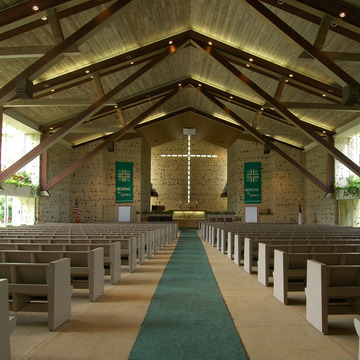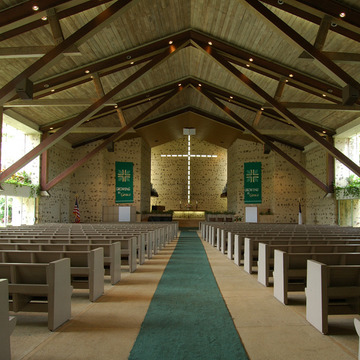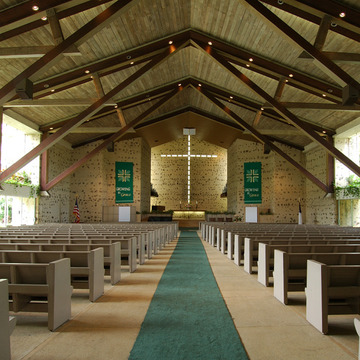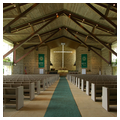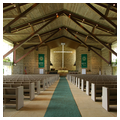Bright, airy, and incredibly open, the spacious interior of the First United Methodist Church instills an abiding serenity. Less a room than an extension of the outdoors, the two-story nave has no solid side walls. Instead, the “walls” consist of four rectangular piers with sliding glass doors between them on the first floor, and wide-meshed wire screens enclosing the second. Lava-rock concrete planter boxes demarcate the two stories, and wood brackets extend from the piers to support bi-level pergolas. The church's solid walls are constructed of lava rock embedded in concrete, which Preis had previously experimented with at Laupahoehoe Elementary and High School (HA51). The sanctuary's end walls are a simple, yet ingenious, pair of convex rectangular slabs which converge on a sliver of glass block. At the altar end, the glass block forms a luminous Latin cross. The chancel, with its cast-stone pulpit and lectern and wood-paneled choir, contrasts with the openness of the nave; its walls converge then expand and culminate at a built-in, concave, polished concrete altar table, from which the cross appears to rise. The church is a delightful composition, especially when viewed from the rear gallery.
You are here
First United Methodist Church
If SAH Archipedia has been useful to you, please consider supporting it.
SAH Archipedia tells the story of the United States through its buildings, landscapes, and cities. This freely available resource empowers the public with authoritative knowledge that deepens their understanding and appreciation of the built environment. But the Society of Architectural Historians, which created SAH Archipedia with University of Virginia Press, needs your support to maintain the high-caliber research, writing, photography, cartography, editing, design, and programming that make SAH Archipedia a trusted online resource available to all who value the history of place, heritage tourism, and learning.


